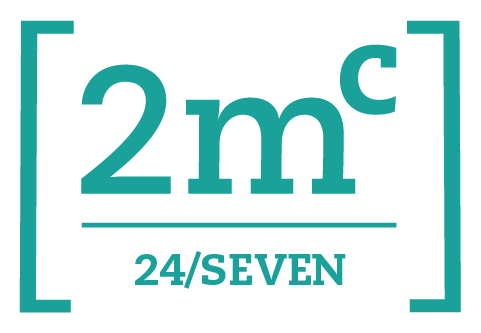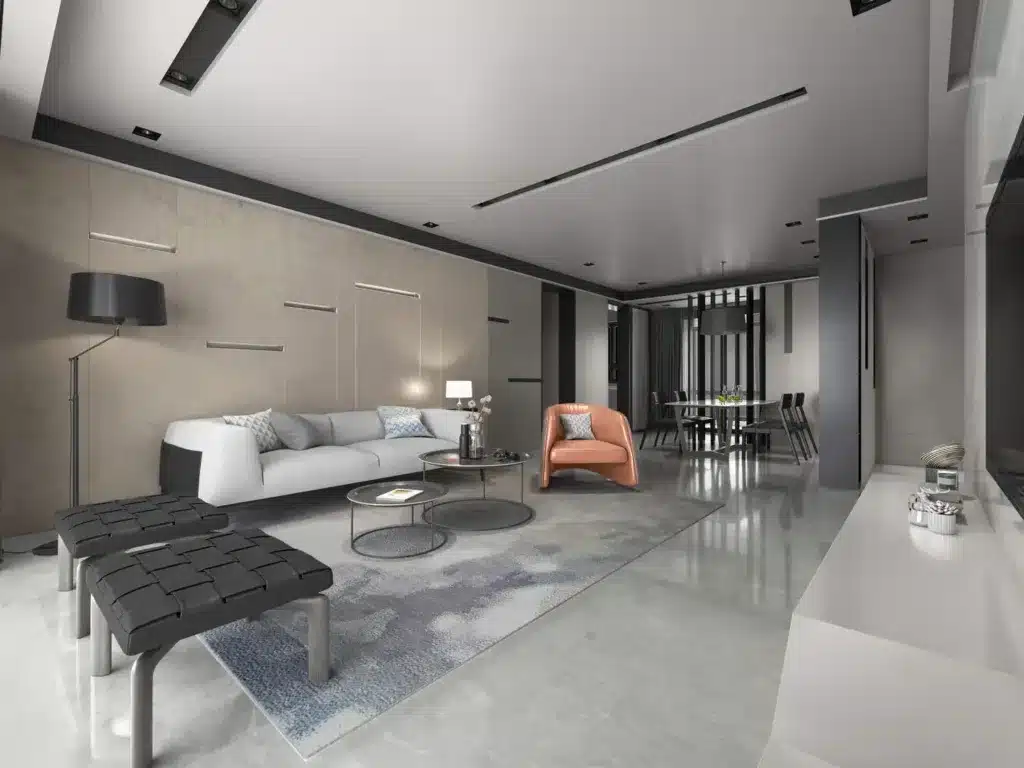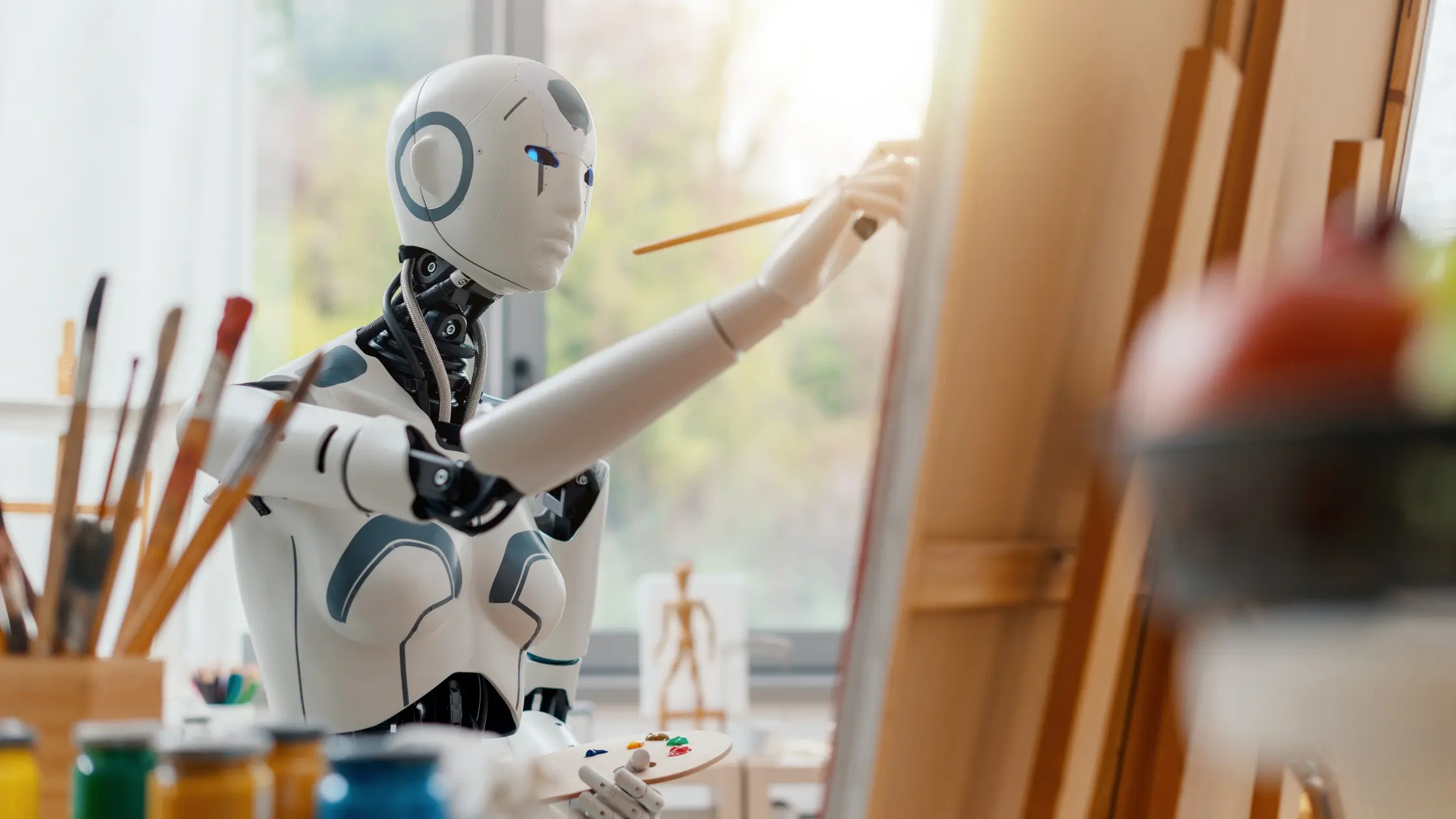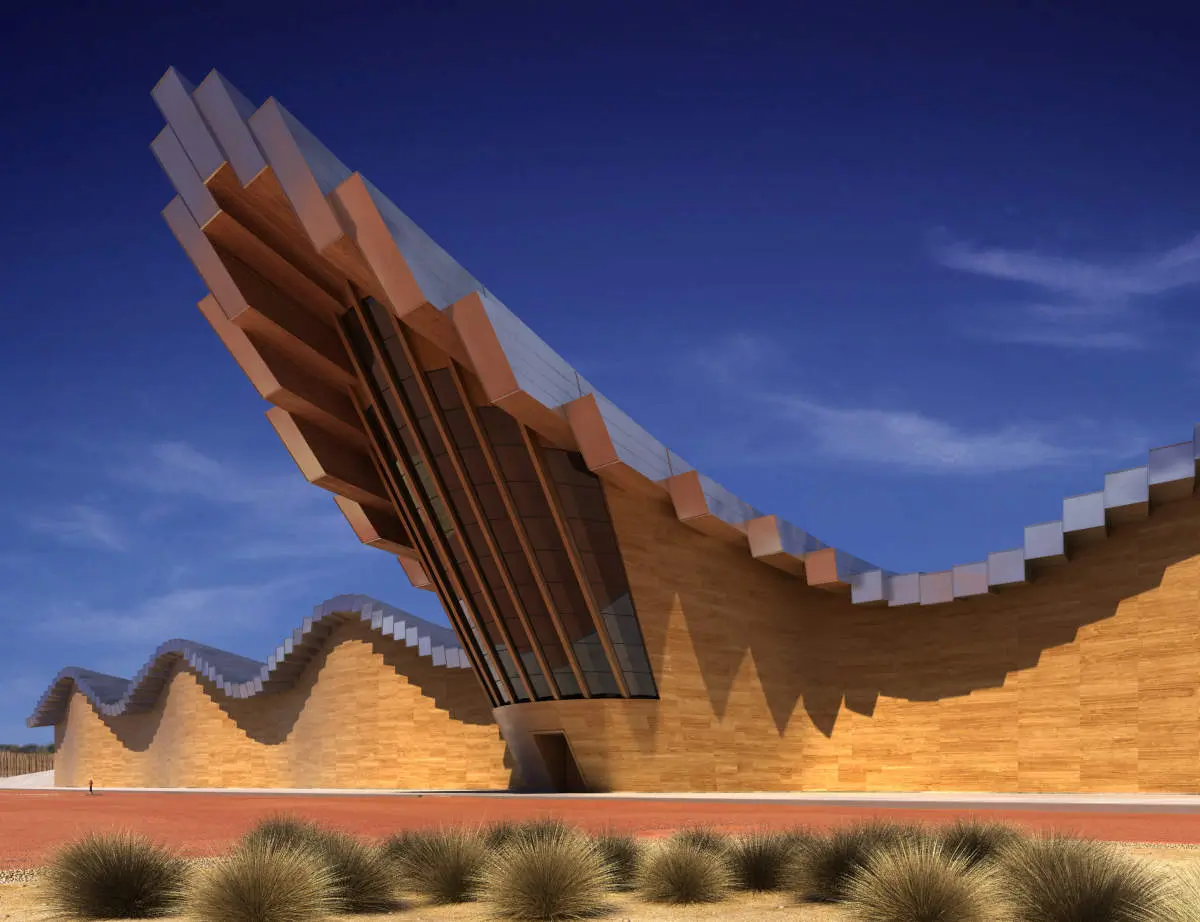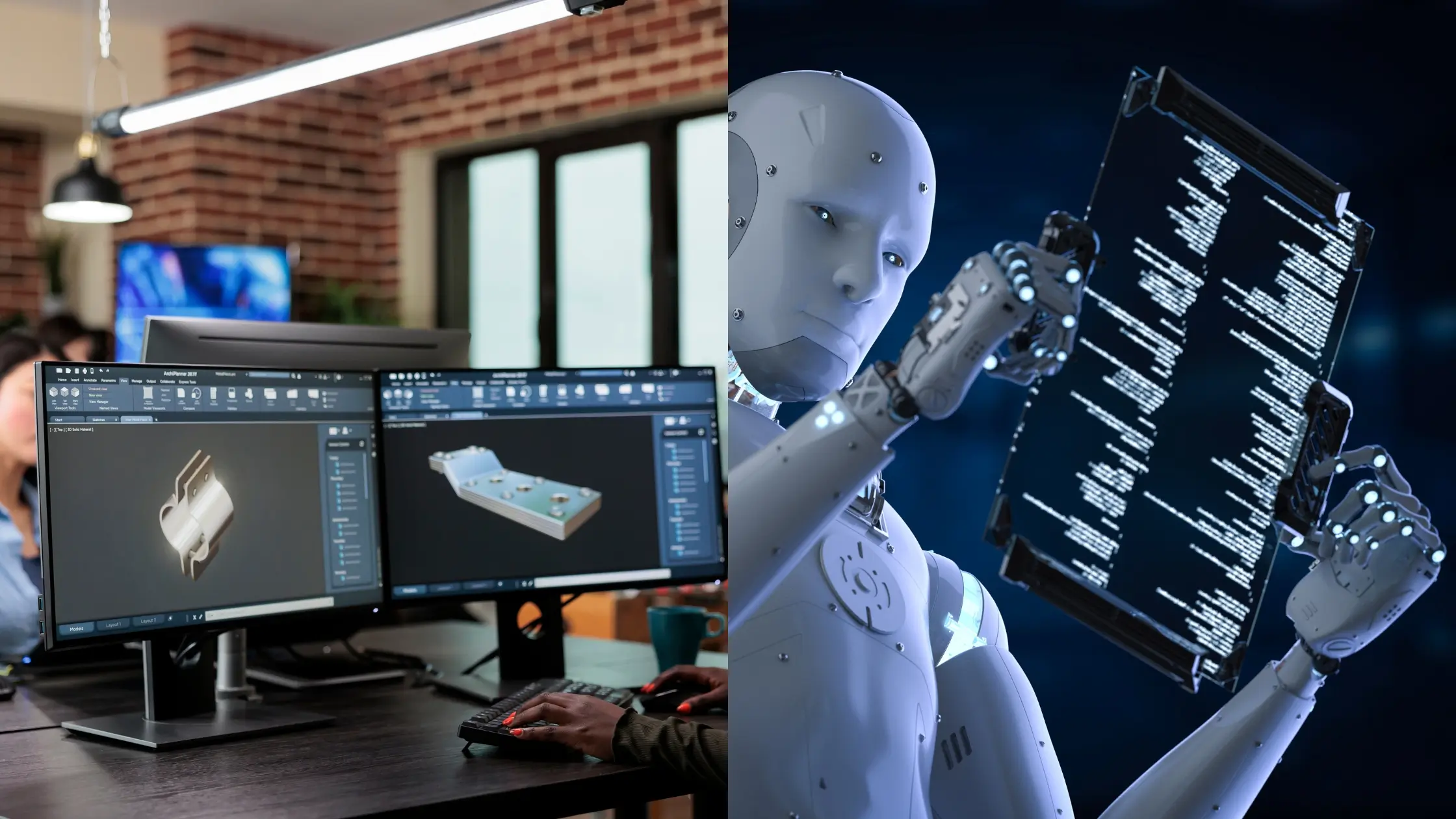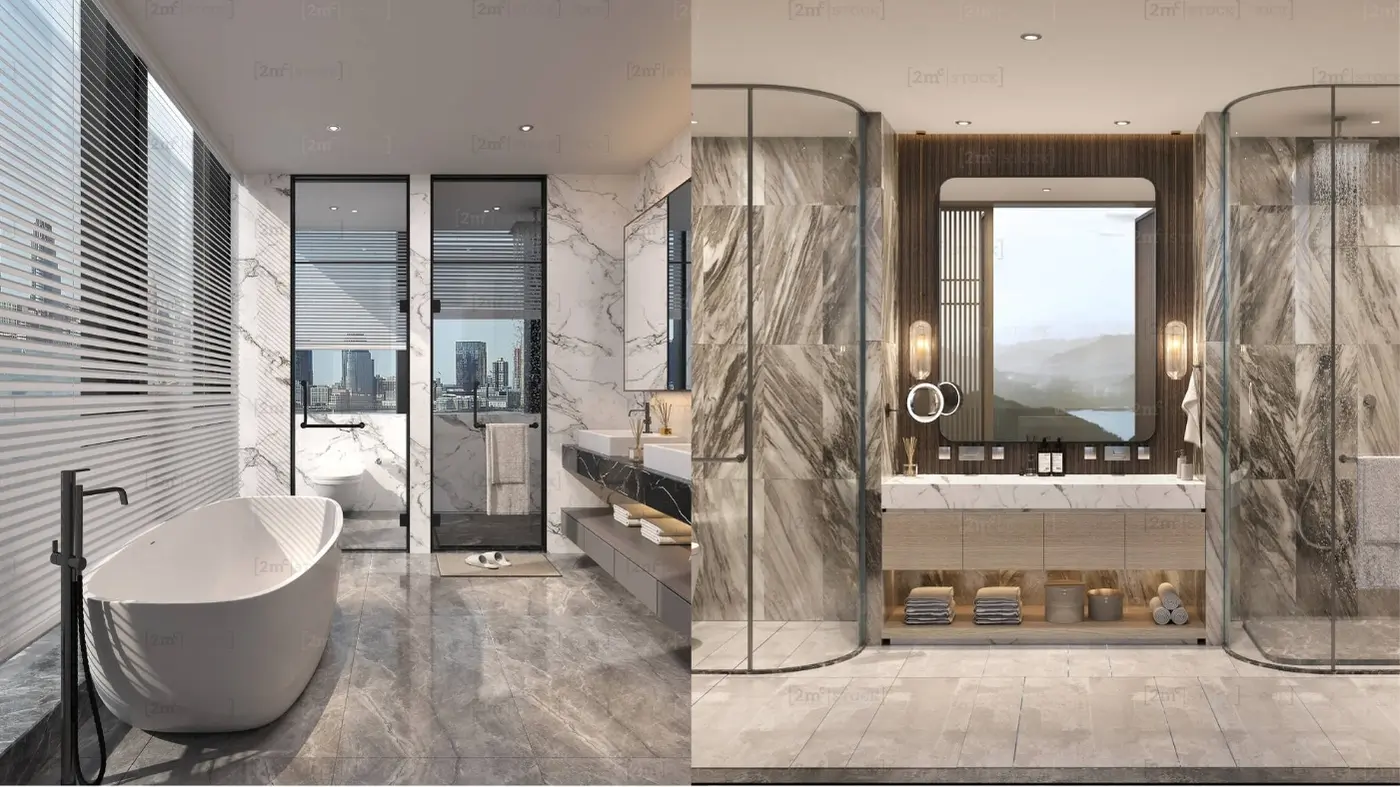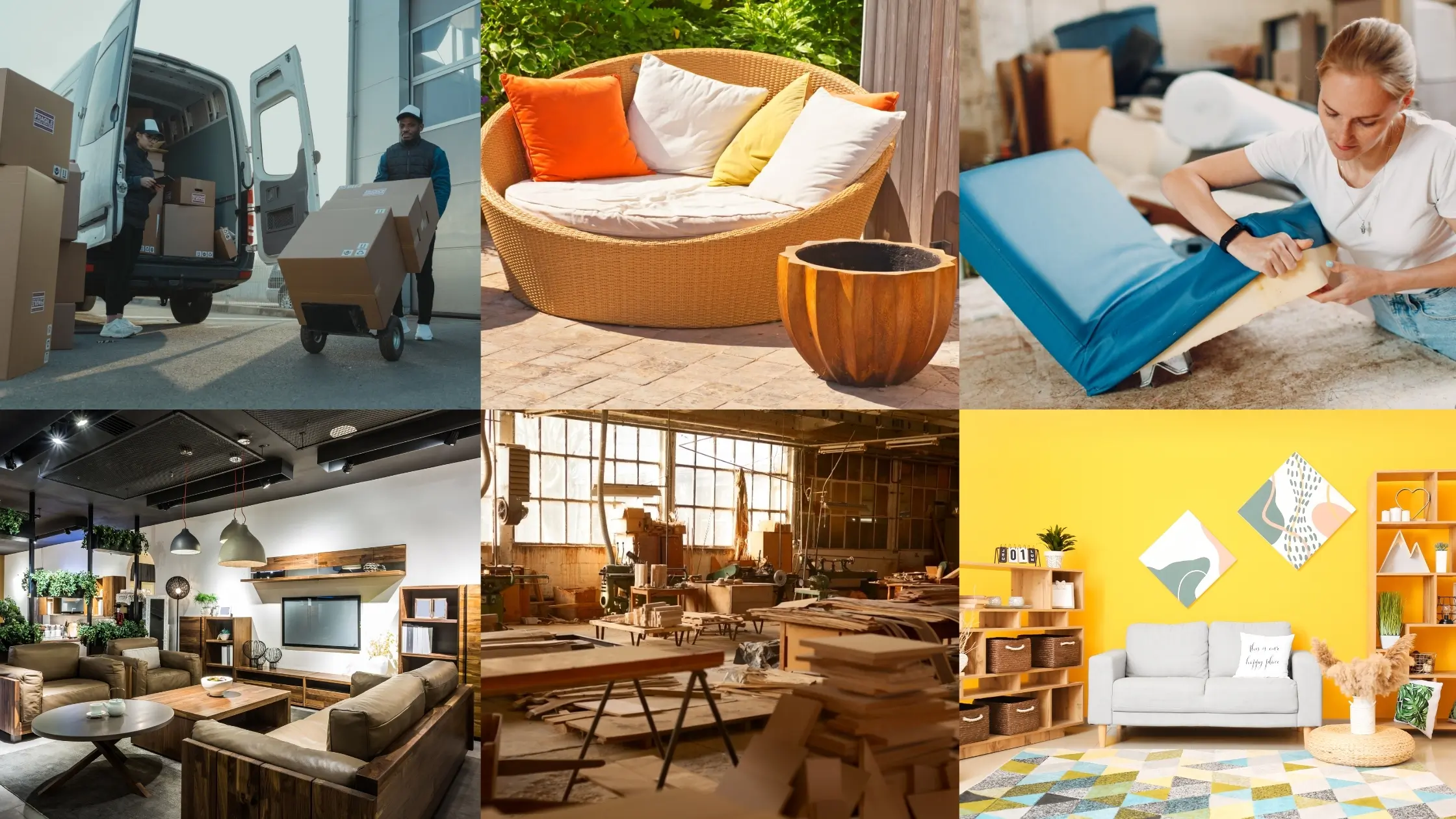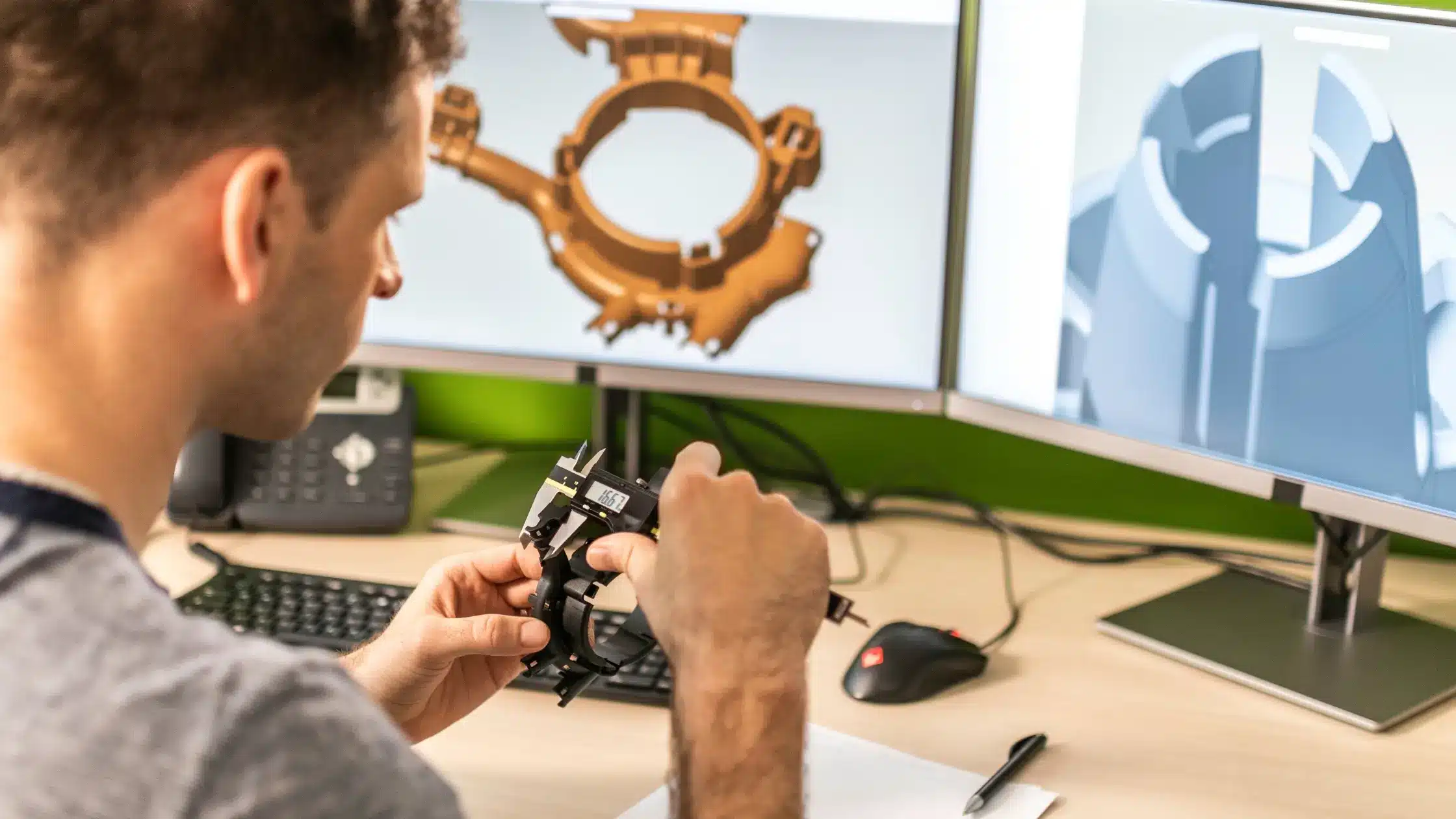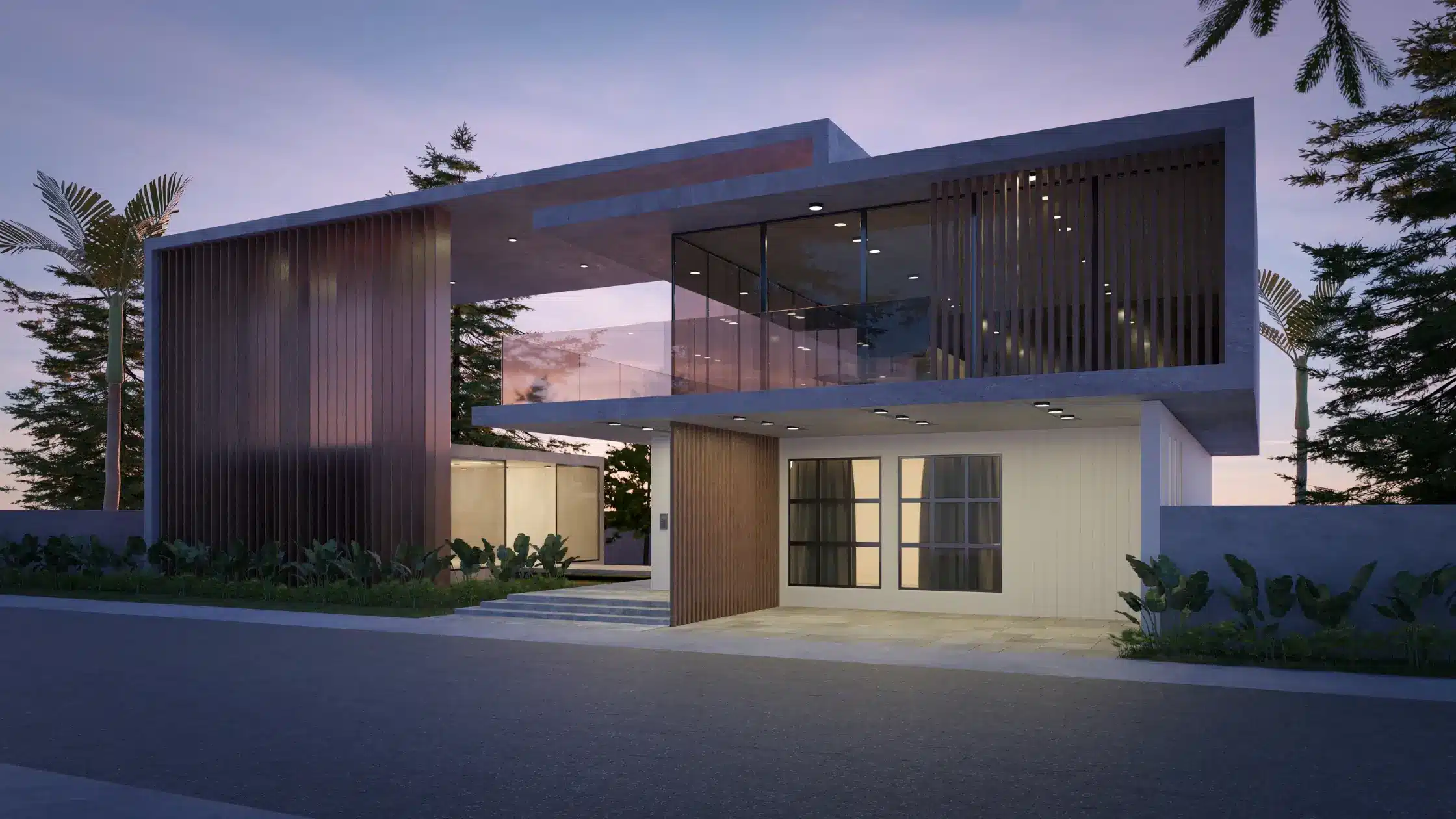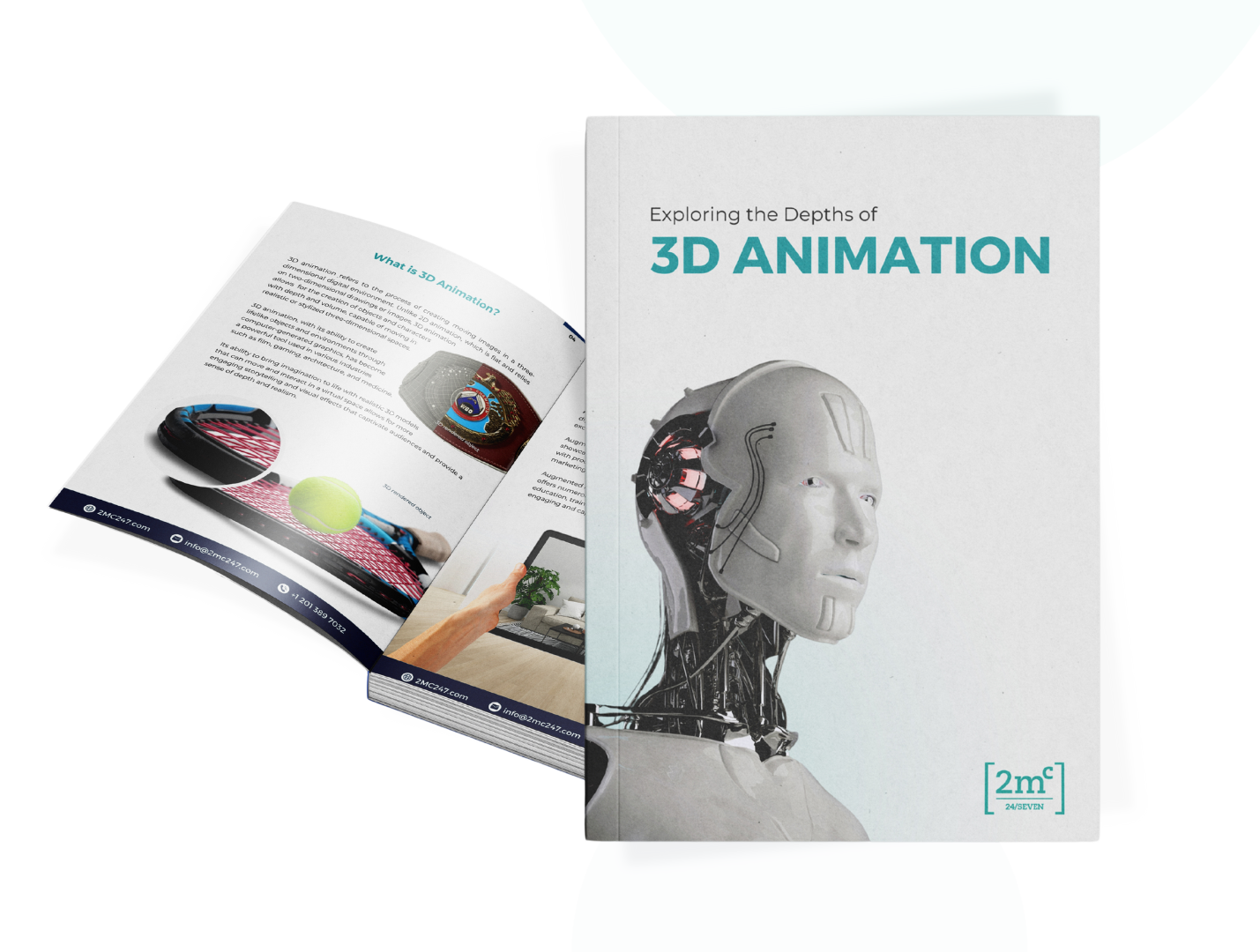AI and Art: What It Means for Today’s Artists
As artificial intelligence (AI) continues to advance, it’s reshaping creative industries in ways that are both exciting and uncertain. From ethical debates to questions about originality and authorship, the role of AI in the arts, especially in digital illustration and concept design, is under growing scrutiny.
So, what does AI mean for working artists? And how can creatives adapt to stay ahead of the curve?
In this article, we look into the world of AI-generated art, explore some of the tools available, and share insights from concept artist and Head of Digital Painting at CGS, Brandon Reimchen (EA, Activision, Capcom, Disney Interactive) on how artists can thoughtfully approach AI in their practice.
What Is AI Art?

AI art refers to any creative work—images, videos, music, or text—produced with the assistance of artificial intelligence. While the process may involve some level of human input (usually prompts or reference materials), the final output is generated by an AI system.
Although AI-assisted art creation isn’t brand-new, it’s only in recent years that it has become widely accessible, sparking global discussions about its impact on creative work.
The Role of Machine Learning in AI Art
Machine learning—one of the core technologies behind AI—enables computers to “learn” from data without being explicitly programmed. By analyzing massive datasets (often scraped from the internet), machine learning algorithms can recognize patterns and generate new content based on them.
In the context of AI art, these algorithms range from basic randomized models to more advanced techniques like neural networks and deep learning. The result: highly realistic or stylized visual content created with minimal manual input.
Common AI Art Tools
Below are some popular platforms used to generate AI-assisted artwork:
Midjourney
Midjourney combines machine learning with generative art to produce creative imagery based on user prompts. Users submit instructions through a Discord channel, defining styles, colors, and other visual elements. Midjourney is often used for its painterly, stylized aesthetic.
DALL·E
Developed by OpenAI, DALL·E creates images from natural language prompts. Known for its photorealistic capabilities, it can also edit existing images by adding or removing elements—something Midjourney does not currently support.
Google Deep Dream
An experimental tool created by Google in 2015, Deep Dream uses neural networks to transform images into surreal, dreamlike visuals. It’s less about control and more about exploration, offering unique, abstract results.
DeepArt.io
This tool allows users to upload an image and apply artistic filters based on various styles—from classical to modern. It also includes customization options like color correction, brightness, contrast, and cropping.
What This Means for Artists

AI doesn’t need to replace creativity—it can complement it. Artists who understand AI’s potential and limitations can use it to enhance their work, speed up workflows, and experiment with new styles. As Brandon Reimchen advises, it’s important to use AI thoughtfully, maintaining originality and respecting ethical considerations.
Ultimately, the key is adaptability. The technology will continue to evolve, but so will the creative community. By staying informed and open to change, artists can continue to thrive—even in an AI-driven world.
Why AI-Generated Images Fall Short for Product Marketing — And How 3D Rendering Fixes It
AI image generators are everywhere these days. From social media posts to marketing campaigns, they can create beautiful, surreal, and eye-catching visuals in mere seconds. Their speed and creativity are impressive, making them a tempting tool for brands looking to produce quick content.
But here’s the truth:
Just because an image looks nice doesn’t mean it performs well—especially when it comes to marketing real products.
The Problem with AI-Generated Product Images
For brands selling tangible products, AI-generated lifestyle images often fall short of what’s needed to drive sales and build customer trust. Here’s why:
- Lack of Product Accuracy
AI tools generate images based on patterns and learned data, not your specific product details. They can’t precisely replicate your design, textures, finishes, or dimensions. This disconnect means customers might see a product that looks appealing but doesn’t match what they’ll actually receive. The result? Broken trust and higher return rates. - Difficulty in Scaling Consistency
Your brand requires consistent visuals across multiple product variants, collections, and marketing platforms. AI-generated images lack the repeatability and control needed to ensure every colorway, material, and angle matches perfectly. Inconsistent imagery risks diluting your brand identity and confusing customers. - Designed for Inspiration, Not Conversion
Most AI images are created to capture attention and inspire creativity, but they don’t focus on the critical details customers need to make buying decisions. Realistic lighting, true-to-life materials, and context that communicates use and scale are missing. This gap makes it harder to convince shoppers to click “Add to Cart.”
Why 3D Rendering Is the Smart Choice for Product Visuals
When you’re running ad campaigns, launching new products, or crafting a compelling brand experience, your visuals need to be more than just attractive. They must be accurate, flexible, and optimized for sales.
Here’s where 3D rendering comes in and outperforms AI-generated images every time:
- Built from Your Actual Products
3D rendering uses real CAD data, textures, and product specifications, so the visuals are exact digital twins of your products. What your customers see online is what they get in reality.

Full Creative Control
You decide every element of the scene — from lighting and angles to backgrounds and materials. This level of control lets you maintain brand consistency and tailor visuals for different marketing channels and campaigns.

Optimized for Conversion
Unlike AI images meant to inspire, 3D renders are designed to sell. They highlight product features, provide clear context, and create immersive experiences that increase customer confidence and reduce returns.

The Bottom Line: AI Is a Starting Point, But Not the Finish Line
AI image generation offers exciting creative possibilities and is a powerful tool for brainstorming and ideation. But when it comes to product marketing, visuals must do more than just “wow” your audience. They need to build trust, communicate clearly, and drive real sales.
If you want visuals that truly sell, you need marketing-ready content crafted with precision and purpose.
Are you using AI-generated images in your marketing? Have you considered 3D rendering as a way to boost accuracy and conversions? Let me know your thoughts!
Why Visualization Is the Voice of Your Architectural Project
Imagine this: You open Instagram and come across a Story with no visuals—just a voiceover on a black screen. Would you watch it, or would you swipe past? Most people would skip it without a second thought.
Why? Because visual content is a language. It communicates instantly, telling stories that words alone often cannot. Silent stories don’t speak, and the same principle applies to architecture.
Architecture Without Visualization Is a Silent Idea
As an architect or designer, your ideas are powerful, your concepts are deep, and your projects are unique. But these qualities remain invisible if not properly communicated. Without visualization, your client can’t fully grasp your vision—they won’t see the flow of space, the mood, or the atmosphere you want to create.
This is where 3D rendering and architectural visualization come in. They transform blueprints and technical drawings into immersive, photorealistic images that convey your concept vividly.
Visualization Speaks Volumes in Seconds
Humans process visuals faster than text. Research shows that people remember up to 80% of what they see compared to just 20% of what they read. When you present a render or a walkthrough animation, you give clients an immediate sense of scale, lighting, materials, and emotion. These elements are essential to helping them connect with the design on a deeper level.
Imagine a client deciding between two projects. One is presented with basic drawings, and the other with a stunning 3D visualization. Which one do you think will captivate their attention?
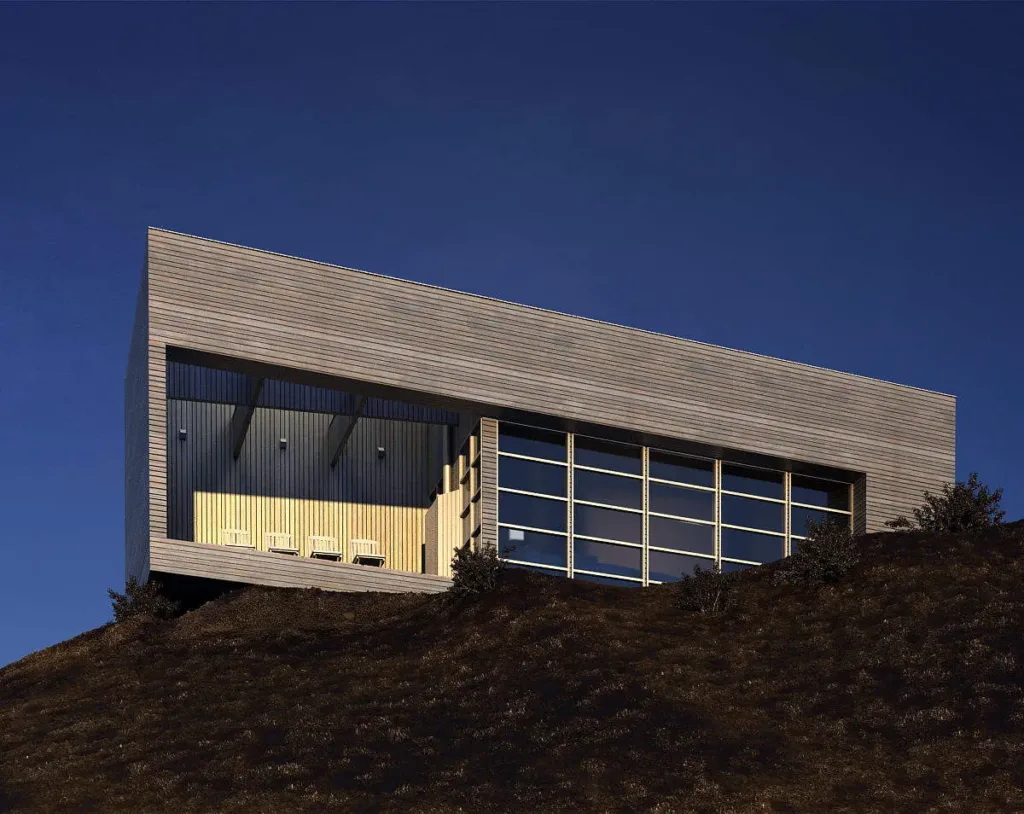
The Render Is More Than Decoration — It’s the Voice of Your Project
A render isn’t just an optional add-on or a decorative element. It’s the project’s voice. It tells the story of your design with clarity and impact. It bridges the gap between your expertise and the client’s imagination.
Moreover, strong visualizations serve many purposes beyond client presentations:
- Marketing and Promotion: High-quality renders are essential for brochures, websites, and social media. They help attract new clients by showcasing your work in the best light.
- Stakeholder Approvals: Clear visuals make it easier for stakeholders to understand and approve design decisions, speeding up project timelines.
- Design Validation: Visualization can reveal potential design issues early, allowing adjustments before costly construction begins.

Bringing Ideas to Life in a Visual World
In today’s digital age, attention spans are short and competition is fierce. Whether you’re pitching to investors, presenting to clients, or sharing your work online, visuals determine whether people stop and engage or scroll past without a glance.
To succeed, your project needs a strong visual presence. Investing in professional c and architectural visualization is investing in the clarity and success of your design.
What’s your experience with architectural visualization? Have you noticed the difference it makes when clients can truly see and feel the space before it’s built? I’d love to hear your thoughts in the comments!
Why 3D Rendering Outperforms AI-Generated Images in Product Marketing
AI-generated images are fast, flashy, and fun—but when you’re marketing real products, “close enough” just isn’t good enough.
The truth is:
AI images often look cool, but they’re usually inaccurate, inconsistent, and hard to customize. That’s a serious problem for eCommerce brands that rely on trust, precision, and a seamless customer experience.
Here’s why more brands are leaning into 3D rendering for product marketing:
✅ Precision You Can’t Fake
3D rendering uses real specs—dimensions, finishes, CAD files, textures—ensuring what your customer sees online is what they’ll receive in real life. No surprises. No pixel-level guesswork.
✅ Creative Control from Every Angle
You choose the background, lighting, camera angles, shadows, reflections, and mood. With AI, you’re at the mercy of the algorithm—and good luck recreating the exact same look across multiple products or campaigns.
✅ Unlimited Customization, Effortlessly
Want to showcase 20 colorways, swap out materials, or create seasonal scenes? With 3D, it’s all modular. One base model, endless consistent visuals—no reshoots or AI re-prompts required.
✅ Built for Business Goals
Great 3D isn’t just pretty—it performs. Accurate product visuals reduce returns, increase buyer confidence, and improve conversion rates. According to Shopify, merchants using 3D/AR see up to 250% increases in conversion.
AI is great for inspiration.
But for product marketing that demands consistency, accuracy, and brand alignment?
3D rendering wins every time.
Why 3D Visualization & High-Poly Models Are Game-Changers for eCommerce
In eCommerce, customers can’t pick up your product.
They can’t feel its texture, judge its size, or see how it looks in their space.
That means your visuals need to do all the heavy lifting.
And not just good visuals—extraordinary, immersive, confidence-building visuals.
This is where 3D visualization and high-poly modeling come in.
They’re no longer just a nice upgrade — they’re becoming the new standard for brands that want to lead in digital retail.
- Realism That Sells
High-poly 3D models are built with precision, capturing ultra-fine details that matter:
- The stitching on a sofa
- The gloss and grain of wood finishes
- The subtle reflection of lighting on metal
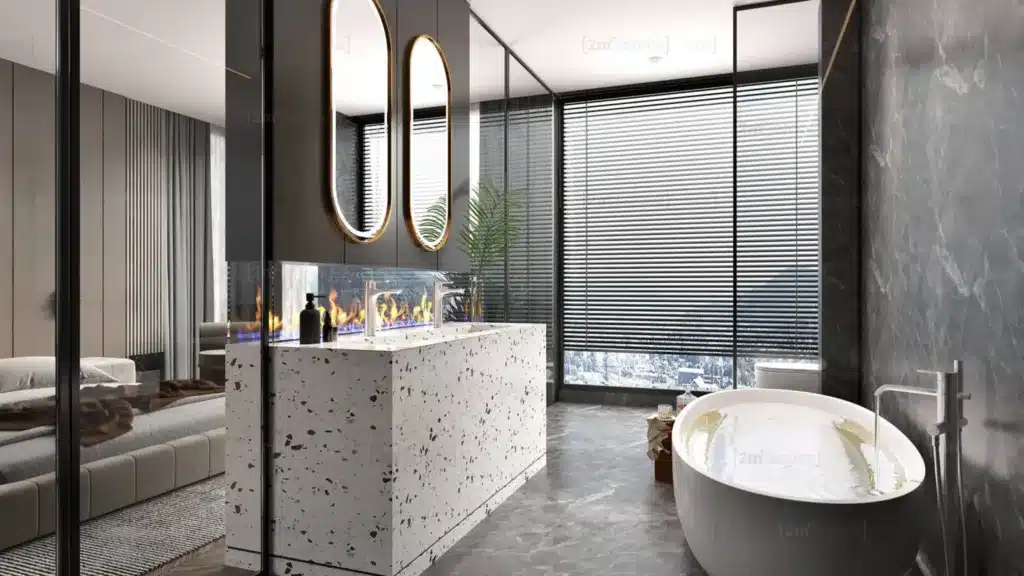
These aren’t just pretty images — they build trust.
Customers are far more likely to convert when they can see your product clearly, from every angle, with lifelike accuracy.
According to Shopify, product pages with 3D models and AR can increase conversion rates by up to 250%.
2. Interactive Exploration
Today’s online shopper expects more than static photos.
With 3D visualization, users can:
Spin the product 360°
Zoom in to inspect fine details
View it from every angle — just like in-store
This interactive experience reduces friction, increases customer confidence, and can lead to significantly lower return rates — by as much as 30%, according to industry studies.
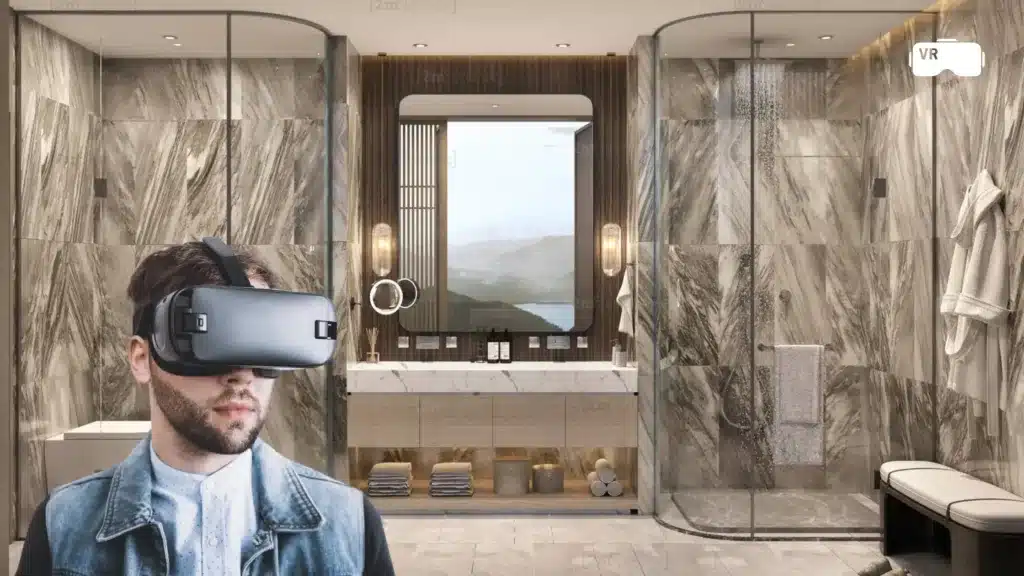
3. Real-Time Customization
One of the biggest pain points in eCommerce?
Limited visuals for product variations.
High-poly assets allow customers to see every variation in real time:
- Fabric and color changes
- Different finishes or materials
- Modular configurations (especially for furniture and tech)
This not only boosts the shopping experience but also allows brands to present hundreds of SKUs without needing thousands of photoshoots.
4. Ready for AR & Virtual Showrooms
Planning to use AR, VR, or virtual showrooms in your future marketing?
You’ll need high-quality 3D assets to make that happen.
- AR lets users place furniture in their room via smartphone
- Virtual showrooms let customers walk through curated spaces
- And high-poly models provide the fidelity needed to make it believable
Brands using AR have seen conversion rates jump by 94%, according to research from Deloitte.
In Short:
Better visuals = better decisions = better sales.
If you’re still relying on static product photos or basic 3D assets, it might be time to rethink your strategy.
3D visualization and high-poly modeling aren’t just technical upgrades — they’re powerful sales tools designed to bridge the digital gap between your product and your customer.
The Harsh Reality Furniture Brands Aren’t Ready to Face: Your Product Marketing Is Broken
Let’s face it — the way most furniture brands market their products is stuck in the past.
Flipbooks, static catalogs, and staged photo sets no longer cut it in a world where customers demand instant, personalized, and immersive shopping experiences.
The New Standard Is Here — and It’s Visual, Interactive, and Smart.
Today’s consumers expect more than just a few well-lit product shots.
They want:
✔ Interactive 3D experiences where they can rotate, zoom, and examine every detail
✔ Real-time product configuration — changing colors, sizes, or finishes on the fly
✔ Instant room visualization to see how a product fits and feels in their own space
✔ Precision customization — without the guessing game
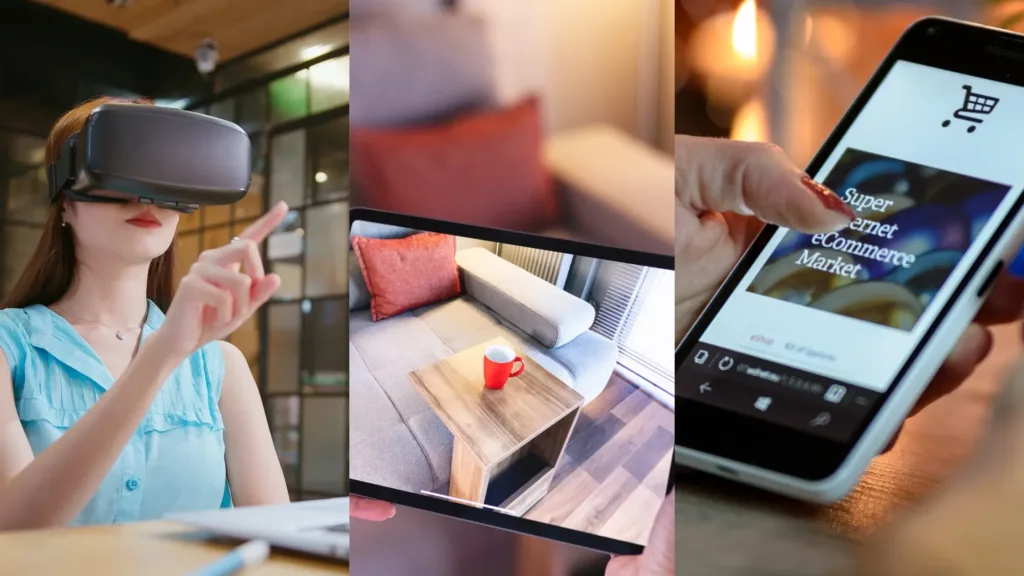
This is no longer a “nice-to-have.”
It’s the new baseline.
Still Relying on Old-School Product Photos?
That’s costing you sales.
Why? Because static images create uncertainty.
Customers don’t want to imagine how your product will look in their home — they want to see it now. And if you can’t offer that, they’ll find a brand that can.
Enter: Roomle — Furniture Marketing for the Modern Age
Roomle brings your products to life with dynamic, real-time 3D visualization tools that are reshaping how furniture is sold online.
Here’s what Roomle delivers:
→ Engaging digital showrooms
→ Configurable product models in real-time
→ Instant AR room previews on mobile
→ Interactive furniture exploration from every angle
The result?
Confidence. Clarity. Conversions.
And the Numbers Don’t Lie:
📈 +35% higher engagement with interactive 3D tools
🛒 +40% increase in conversions through product configurators
📉 -30% reduction in returns thanks to better pre-purchase visualization
These aren’t theoretical benefits — they’re real business outcomes.
Meanwhile, Your Competitors Are Still Using Flat Images.
That’s your opportunity.
Instead of blending in, stand out with:
- Immersive product experiences that let your customers play with your catalog
- On-the-spot customization without the lead times or confusion
Seamless integration into your website, eCommerce platform, and mobile experience
The Furniture Market Is Evolving — Fast.
Customers don’t want to scroll through another generic gallery.
They want to experience your product like it’s already in their home.
Those who adapt will win with:
✅ Higher sales
✅ Lower returns
✅ Happier, more confident buyers
Those who don’t?
They’ll get left behind.
This is your chance to lead the shift.
Reimagine your furniture marketing.
Build trust with every click.
Let’s transform how your customers buy — from passive viewing to active choosing.
Why a “Small” 3D Model Is Never as Simple as It Looks
I always find it interesting when clients ask,
“How long will it take to make the 3D model?”
It’s a fair question — and a common one — but the answer is rarely as straightforward as it seems.
Let’s take what might appear to be a small project:
A three-story model, measuring 15m x 5m.
Sounds manageable, right?
But here’s the reality…
Behind the scenes, even the simplest-looking 3D model requires an incredible amount of work — and precision.

What’s Really Involved?
Design Translation:
We start by understanding every line of the architectural drawings and translating that into a 3D space that’s both accurate and expressive. This isn’t just modeling — it’s spatial storytelling.
Detailing Every Millimetre:
Windows, trims, railings, lighting fixtures, façade textures — each element has to be modeled and placed with care. Even minor features have to reflect how they’d actually appear in the real world.
Iterating With Feedback:
Client feedback is a vital part of the process. Each round of revisions involves careful updates, rendering, testing materials, and checking how changes impact the overall scene.
Aesthetics & Functionality:
It’s not just about looking good — it’s about communicating design intent clearly. Every camera angle, lighting setup, and texture needs to serve a purpose: to inform, to inspire, and to sell the vision.
Cross-Team Collaboration:
Often, we’re not working alone. Architects, interior designers, product suppliers, marketers — everyone has input. It’s a balancing act between vision and feasibility.
The Truth?
It’s never just a model.
Even small-scale projects demand creativity, technical knowledge, patience, and time.
So next time you see a polished 3D render, remember:
You’re looking at dozens of hours of modeling, testing, rendering, and refining.
You’re seeing not just software output, but craft.
3D visualization is an art form — and like any great piece of art, it’s about more than meets the eye.
Have you ever underestimated the time behind a design or creative project?
I’d love to hear your perspective.
What Clients Don’t See Behind a 3D Render: The Hidden Craft of Architectural Visualization
Most people look at a 3D visualization and think:
“Nice.”
It’s clean. It’s realistic. It looks like a photograph.
But what clients don’t see is the real work that goes into making that image come alive — not just visually, but emotionally.
Behind Every Render Is a Process Few Talk About:
✔ Reference Gathering:
Before a single polygon is created, we spend hours (sometimes days) compiling inspiration — materials, lighting references, furniture styles, architectural mood, and even cultural influences that guide the overall tone of the visual.

✔ Story-Driven Lighting:
Lighting isn’t just technical. It sets the mood, guides emotion, and creates atmosphere. Whether it’s the golden hour glow spilling across a hardwood floor or moody shadows dancing in a modern loft, light tells a story before a single word is spoken.
✔ Composition That Leads the Eye:
Just like a photograph or painting, great 3D visuals follow the rules of composition. We consider focal points, camera height, lens distortion, symmetry vs. asymmetry, and negative space — all to make sure the viewer’s eye lands where it should.
✔ Color and Texture Balance:
Realism isn’t just sharp models and high-res textures. It’s about restraint. Knowing when to let colors pop, when to keep tones subtle, and how to avoid visual overload. It’s also about mimicking how materials react to light in real life — leather, glass, marble, linen — each requiring their own shading logic.
✔ The Long Hours No One Sees:
Rendering is often the last step. What comes before are days (and nights) of trial and error — adjusting models, testing render engines, running simulations, fine-tuning shaders, correcting lighting, and post-processing in Photoshop to bring everything together.

3D Visualization Is Not a Shortcut. It’s a Craft.
It’s not about pressing “render” and waiting.
It’s about intention. About feeling. About making someone believe they’re already there — in a space that doesn’t even exist yet.
At Pixel Architect, we don’t just aim for photorealism.
We aim for presence.
Our work is designed to do more than just show a space — it’s made to connect people to it. To help clients feel the design vision long before the first brick is laid.
Let’s build something more than a visual.
Let’s build a story.
Let’s build with purpose.
How 3D Product Visualization is Transforming Online Sales in 2025
In the digital age, where online shopping is the norm, the way products are presented can make or break a sale. Traditional 2D images often fall short in conveying the full essence of a product, leading to customer hesitation and increased return rates. Enter 3D product visualization—a game-changer in the e-commerce landscape.
The Power of 3D Visualization

3D product visualization allows customers to interact with products virtually, offering a comprehensive view from every angle. This immersive experience bridges the gap between physical and online shopping, providing a more accurate representation of products
Impact on Conversion Rates
The adoption of 3D visualization has shown remarkable results:
- Conversion Boost: Implementing 3D content on product pages can lead to a 94% increase in conversion rates.
- Enhanced Engagement: Approximately 82% of viewers engage with 3D assets when available.
- Increased Confidence: 66% of shoppers report that 3D configurators enhance their confidence in purchasing decisions.

Reduction in Return Rates
One of the significant challenges in e-commerce is product returns, often due to unmet expectations. 3D visualization addresses this by providing a realistic portrayal of products:
- Return Reduction: Adding 3D content to product pages can reduce returns by 40% on average.
- Retailer Insights: 89% of retailers believe that 3D content is crucial for minimizing returns.
Enhancing Customer Experience
Beyond sales metrics, 3D visualization enriches the overall customer journey:
- Interactive Experience: Customers spend an average of 20 seconds interacting with 3D content, indicating higher engagement levels.
- Preference for 3D: A staggering 95% of users prefer interactive 3D content over static images or videos.
Conclusion
The integration of 3D product visualization in e-commerce is not just a trend but a strategic move to enhance customer satisfaction, reduce return rates, and boost sales. As technology continues to evolve, businesses that embrace 3D visualization are poised to lead in the competitive online marketplace.
What are your thoughts on 3D product visualization? Have you experienced its impact firsthand?
